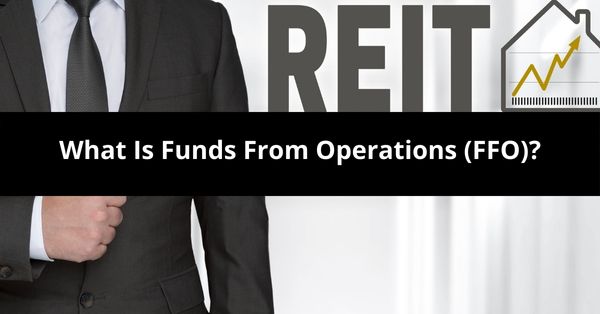FFO is a formula created by NAREIT as a way to measure the cash generated by a Real Estate Investment Trust (REIT). The formula was created because traditional cost accounting methods cannot accurately show the value of an account because they fluctuate on a regular basis.
FFO is different from EBITDA, because FFO measures cash flow while EBITDA measures profitability. Knowing cash flow is more important for a REIT because you can transfer funds in a more streamlined way than you can by only knowing non-fluctuating profit.
The formula for FFO is:
FFO = (Net Income + Depreciation + Amortization + Losses on Property Sales) – Gains on Sales of Property – Interest Income
Don’t let the formula scare you! It’s really easy to use.
How to calculate your FFO:
- Find each amount for the equation:
- Net income is the profit amount located at the bottom of your income statement.
- Depreciation (a reduction of the value of an asset) is located on your cash flow statement in the operating activities section.
- Amortization (lowering the value of an asset over a set period of time) is on your cash flow statement in the operations section.
- Losses on the sale of any of your business properties (when the selling price is lower than the net book value) is found on your cash flow statement in the operations section too.
- Subtract any gains from when the business sells an asset and the selling price is higher than the net book value which is noted on your cash flow statement.
- Subtract any earnings from the interest of marketable securities, long-term investments, or cash maintained in an interest-paying checking account. These will be on either your cash flow statement or income statement.
Note: Both depreciation and amortization reduce your net income which means you need to add them back into your net income to determine the actual incoming cash/revenue.
Ok, that’s a lot to take in, so here’s how to do this.
Example 1:
You have declared a net income of $20M last year, a depreciation expense of $4M, an interest amortization expense of $2M, an interest income of $1M, and a gain on the sale of various assets of $2M. The actual cash flow from your business operations (FFO) is $23M.
Starting with $20M net income, add $4M in depreciation and $2M amortization, then subtract the $2M in gains on the sales of assets and the $1M in interest income. The FFO is $23M.
FFO = ($20M + $4M – $2M) – $2M – $1M = $23M
Example 2:
You have $120M in net income, $20M in depreciation and amortization expenses, $10M in losses from a sale of an asset, $14M in interest income, and $6M in gains from the sales of assets.
Starting with $120M net income, add $20M in depreciation and amortization and $10M for the losses from a sale. Then subtract the $6M in gains on the sales of assets and the $14M in interest income. The FFO is $130M.
FFO = ($120M + $20M + $10M) – $6M – $14M = $130M
Now you’re ready to use the FFO method to calculate your cash flow and continue to grow your investments in REITs.

